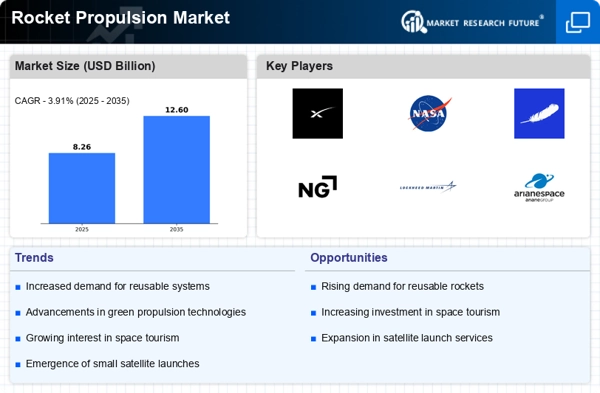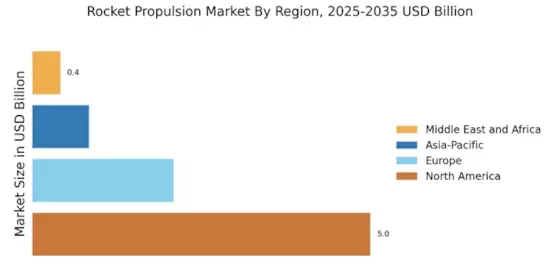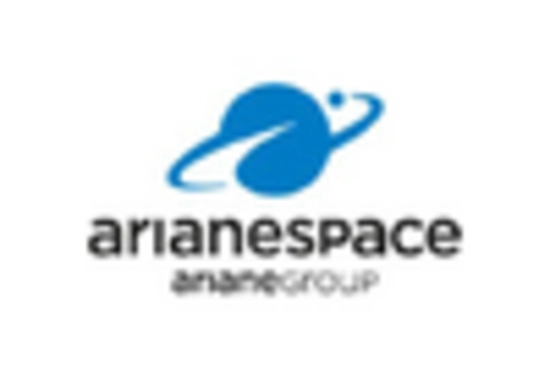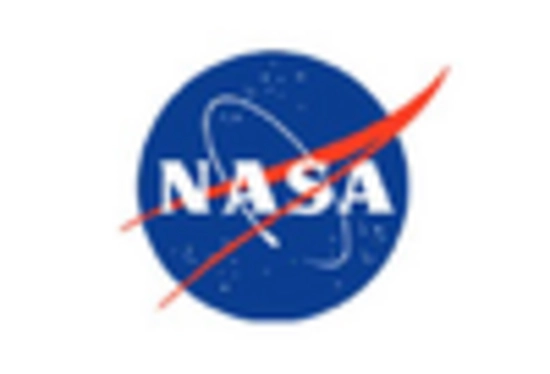Emergence of Commercial Space Travel
The Rocket Propulsion Market is poised for transformation with the emergence of commercial space travel. Companies such as SpaceX and Blue Origin are pioneering efforts to make space tourism a reality, which could lead to a substantial increase in the number of launches. The market is projected to witness a growth rate of around 10% annually as more individuals and organizations seek to participate in space travel experiences. This burgeoning sector necessitates the development of safe, efficient, and cost-effective propulsion systems to cater to the unique demands of commercial flights. As competition intensifies, innovation in rocket propulsion technologies will likely accelerate, further propelling the market forward.
Increased Demand for Satellite Launches
The Rocket Propulsion Market experiences a notable surge in demand for satellite launches, driven by the growing need for communication, Earth observation, and scientific research. As nations and private entities invest in satellite technology, the market anticipates a compound annual growth rate of approximately 8.5% over the next five years. This trend indicates a robust expansion in the number of launches, necessitating advancements in propulsion systems to accommodate the increasing payload capacities and mission complexities. The proliferation of small satellites, particularly in low Earth orbit, further emphasizes the need for efficient and reliable rocket propulsion solutions. Consequently, manufacturers are compelled to innovate and enhance their propulsion technologies to meet the evolving requirements of the satellite launch sector.
Advancements in Space Exploration Initiatives
The Rocket Propulsion Market is significantly influenced by the advancements in space exploration initiatives undertaken by various governmental and private organizations. Missions aimed at Mars exploration, lunar landings, and deep space missions are gaining momentum, necessitating the development of advanced propulsion systems capable of operating in diverse environments. For instance, NASA's Artemis program aims to return humans to the Moon by 2024, which requires cutting-edge propulsion technologies to ensure mission success. The increasing collaboration between space agencies and private companies is likely to accelerate innovation in propulsion systems, thereby expanding the market. As exploration missions become more ambitious, the demand for reliable and efficient rocket propulsion solutions is expected to rise, driving growth in the industry.
Government Investments in Defense and Security
The Rocket Propulsion Market is significantly bolstered by government investments in defense and security applications. Nations are increasingly recognizing the strategic importance of advanced propulsion systems for military and defense purposes, leading to heightened funding for research and development. The market is expected to grow at a rate of approximately 7% annually, driven by the need for reliable launch systems for defense satellites and missile systems. As geopolitical tensions rise, the demand for advanced rocket propulsion technologies that ensure national security is likely to increase. This trend indicates a robust market environment, as governments prioritize the development of indigenous propulsion capabilities to enhance their defense readiness.
Technological Innovations in Propulsion Systems
The Rocket Propulsion Market is experiencing a wave of technological innovations that are reshaping the landscape of propulsion systems. Developments in hybrid propulsion, electric propulsion, and advanced chemical propulsion technologies are gaining traction, offering enhanced performance and efficiency. The market is projected to grow by approximately 9% annually as these innovations address the challenges of cost, reliability, and environmental impact. Companies are investing in research to develop next-generation propulsion systems that can support a variety of missions, from satellite launches to interplanetary exploration. This focus on innovation is likely to drive competition among manufacturers, leading to improved propulsion solutions that meet the diverse needs of the market.


















Leave a Comment